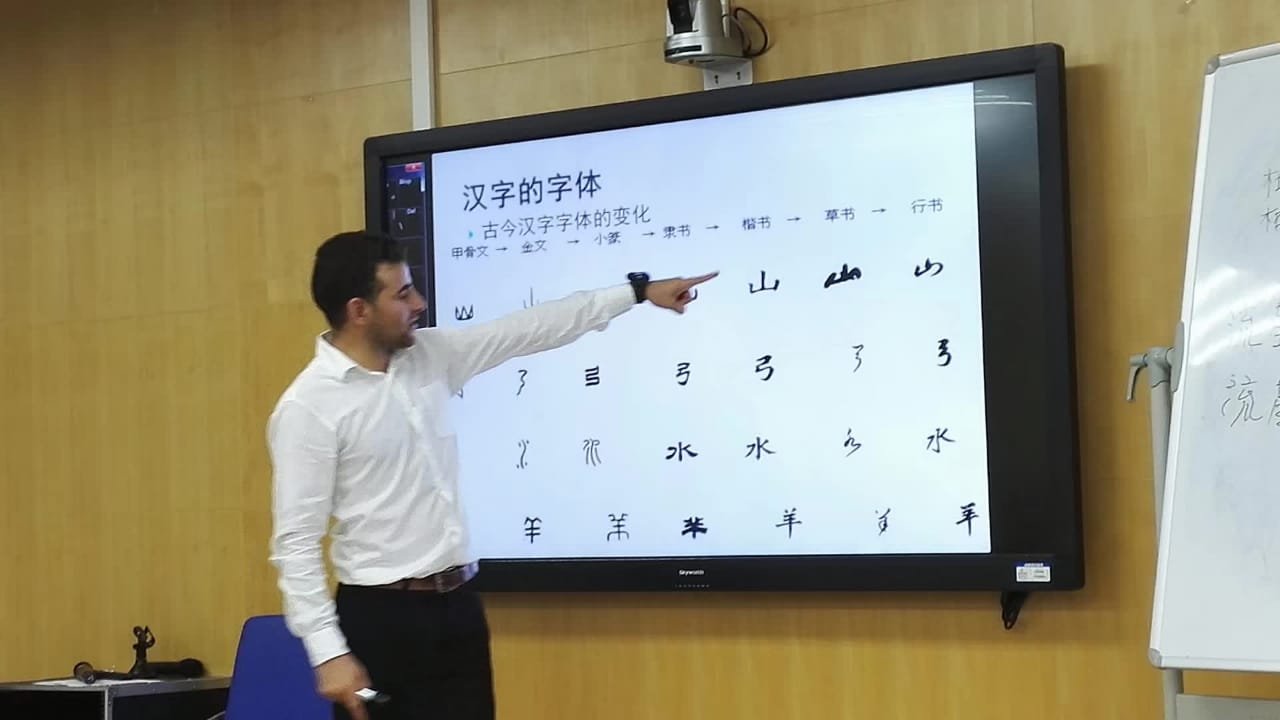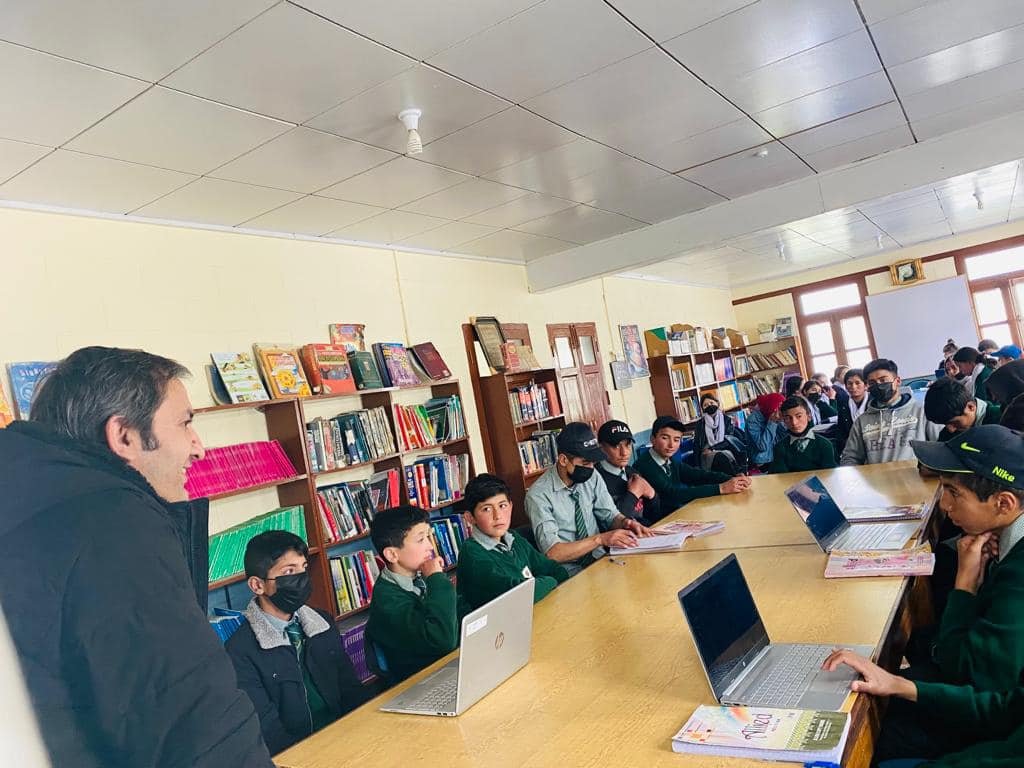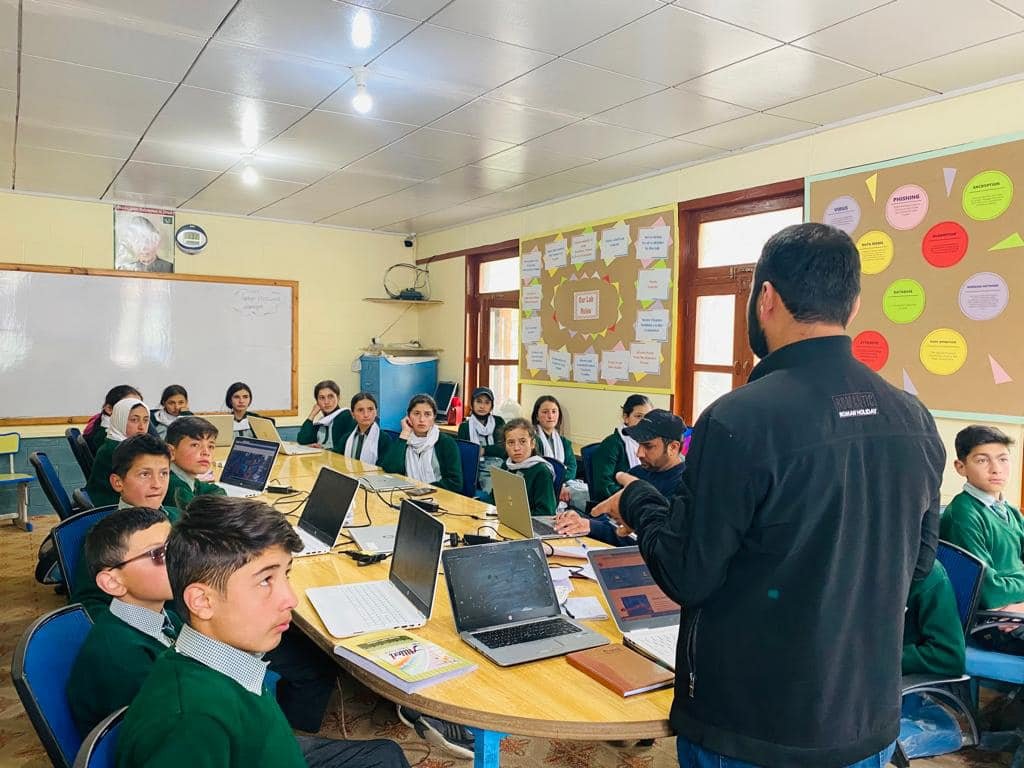Education
The Falling Standards of Education
Published
1 year agoon

The falling standards of education in Govt institutes is reflected in their poor performance in Entry tests recently conducted at NED university. On the other hand the candidates from Cambridge system have over performed by showing 90% plus results. The traditional education in Government institutes is based on rutting and memorizing with no innovative and critical thinking. Students are forced to learn a volume of material by heart and sometimes one gets astonished that students securing 99% marks and securing top positions in board exams are even failed in entry tests to secure 50% marks. On the other hand, the Cambridge system of O/A level exams is based more on critical thinking and problem solving. One of the fundamental reasons is also poor capacity of teachers in public sectors. Their knowledge is more static and they are not ready to improve it. The teaching learning methodologies are stuck around the traditional books, exercises and assignments. The outcomes are not well defined. This is also the case in Higher Education Institutes of public sector, where quality teaching remains the least priority. In most of public sector Universities, there is no rigorous teacher education and capacity building process nor the quality assurance processes. The lack of adherence to merit and quality both backwards and forwards in general creates a vicious circle of Garbage In is Garbage Out (GIGO). This is further devastated by unnecessary litigation by those who lack merit and plus politics in HEIs of public sector. For a university to achieve academic excellence, the following pillars have to be strengthened.
1. Total Quality Management. Meeting or exceeding the requisite standards in all aspects from teaching, learning assessment, students & employees services etc. QEC in general attempts a very small part of it. Continuous Quality Improvement plays pivotal role by benchmarking with some best national and international HEIs.
2. Research based culture: Research and innovation creates culture of inquiry and investigation. When research is focused on the challenges faced by society, it becomes holistic. Though HEC established Offices of Research Innovation and Commercialization (ORICs) , in most cases , these offices couldn’t create research culture in HEIs. When dividends of the research are transformed to some new products and services, it is called innovations and as next step, such products are commercialized with the support of industry. Government and society. Unfortunately ORICs in HEIs remained mostly stuck up in Research only. While looking at the quality of research, its relevance and authorship in many cases, questions have been raised on the research conducted at HEIs. Academic dishonesty in the form of Guest Author, Ghost Author and Gift Author are very common. It’s never treated like a crime to be part of a paper having no role of such authors. ORICs in HEIs of Pakistan have to reorganize to come to the expectations of the nation.
3. Financial sustainability. HEIs by and large are drowning under their own weights. For years and years, these remained employment exchanges for political blue eyed. New Universities were established without any feasibility in most of the cases and to gift the nears and dears with Govt jobs. This has seriously jeopardized the teaching to non teaching ratio. For a good HEI this ratio must be 1:2 to 1:2 at max but in Pakistan it is as high as 1:4 and 1:5. This has made the Employees Related Expenses (ERE) as the largest component of total operating budget. Today for many HEIs in public sector, it has increased to 80% or more of the total budget. This leaves Universities with very little autonomy to spend on research, faculty development, improvement of services, acquisition of new assets etc. For a sustainable financial model HEIs need to diversify their resources by creating 30-40% from fee revenue, 20-30% from Govt grants and 20-30% from research dividends, commercialization, royalties etc.
4. Improvement of services: HEIs in public sector are trapped in poor productivity and services. The students related services are worst in many cases. Their routine services take months including approvals and notifications etc. The lack of accountability further complicates it. Online students and employees services can improve the performance provided that the staff has enough capacity through rigorous human resource development processes.
5. Politicization of institutes through creating pressure groups and lack of accountability process. One marked difference between public and private HEIs is the lack of accountability. The author has the opportunity to serve in two public sector Universities and one private sector university. The visible accountability through Carrot and stick policy at private sector HEIs created excellence to some extent. The lack of ownership in public sector HEIs, political interference and existence of pressure groups have rendered HEIs more like doomed Public Sector Enterprises +PSE) such as PIA, Pak Railway and Pak Steel Mills in most of the cases. This is further complicated by litigations etc.
6. Poor investment by Governments in higher education. Public investment in higher education is static for at least 5 years. There is no or minimal increase in the grants of Universities whereas in last 4 years the payroll of Universities has been doubled. As a result, today most of the public sector Universities are faced with financial crisis and some of the Universities have been unable to pay the salaries, pension or both. The indifference of Governments to Higher Education in Pakistan has left the universities in lurch. There is a need to constitute a Task Force to address this very emerging issue where all Universities are faced with crisis one way or the other. At KIU though we could manage this crisis in last 4 years but due to additional burden of Rs. 150 Million from three new sub campuses of Hunza, Chilas and Ghizer as well as expected increase of 200 Million in Employees Related Expenses, an apparent deficit of 300-400 Million is evident. The non increase of HEC Grant during current year has added fuel to fire. It is feared that University will be in crisis from next month. This leaves us with only option to increase fee exuberantly but this seems next to impossible in places like GB where people are not in a position to pay such increases due to their poor socioeconomic conditions on one hand and lack of priority of higher education on other hand. The average per semester fee of KIU is less than a public schools fee at the moment.
Today HEIs in public sector are generally trapped in a vicious circle of low financing, low productivity, poor quality and larger deficits. To move out of this crisis, there is a need to develop a comprehensive plan involving all major internal and external stakeholders particularly faculty staff, students and their parents, Government, media and society. An emergency needs to be declared to save Higher Education from real devastation, as its failure will mean black future for the hundreds of million youth of nation which stand at 60% of total population. The notion of “Give 4% to Education to save it from Decca station ” has become inevitable.
About Author
Engr. Prof. Dr. Attaullah Shah
The author is the Vice-Chancellor of Karakoram International University.
You may like
-


KIU’s formative impact catalyzes a series of significant accomplishments: Syed Sibt-e-Hassan’s Success Story
-


Dr. Adeeba’s Resilience: A Journey of Triumph and Inspiration
-


Embracing Challenges: Gul Rukhsar’s Remarkable Journey
-


Humira Karim: A Proud alumnus of Department of Chemistry KIU
-


Traditional women’s dresses of Gilgit-Baltistan
-


Shuqa Simple but amazing winter clothing of Gilgit-Baltistan
1 Comment
Leave a Reply
Cancel reply
Leave a Reply
Education
The Learning Deficit: Unmasking the Failings of Education and Overcoming the Obstacles.
Published
9 months agoon
July 13, 2023By
Zia Uddin
Spectacularly, the education system, which most of us will not be shocked to get to know, refers to the coordination of individuals — among teachers, — administrators, and students. Above all, it demands infrastructure — including safe facilities and transportation, to be functioning institutions and systematic processes.
Similarly, the system of education, radically, is linked to the transmission of knowledge, which allows the socialization of people.
In addition, I would go along the chasmic view that the education sector, prominently, is supposed to provide superior human resources to all areas of national life. It builds, — stabilizes, — and keeps the nation on the move, and among citizens, probably, enhances a sense of civility, patriotism, and super good understanding.
To get notched educational goals up, curriculum plays a vital role as a pillar does in the building.
But. Ruefully, for us, an effective system of education has always been a wish to be fulfilled. That is to say, we, for the good, have gotten ourselves stuck in a fallacious and tedious chain of the education system. Imagine, being attached to the — syllabus — which — almost— erroneously brings us approximately two decades back. For sure, our syllabus is expired and we can’t even think of competing with the current epoch of education with the quality we have.
Likewise, Pakistan, more often than not, lacks the most identified tactics to adopt technologies in curriculum, but conversely, in foreign countries, strategies are made in such a way that curriculum changes with the updation of technologies. As aforementioned, in Western countries, the education system is student-oriented, enhancing superior qualities like critical thinking, problem-solving skills, and formulating new ideas, above all, having the concept “Study to Understand, not memorize” weighs students’ motivation.
But, on the other hand, in our country ” Teacher” holds the remote, He controls, His opinions are undeniable and we are merely supposed to memorize selected numbers and facts. Isn’t it too uncanny?
Although, to overcome these hindrances, I have jotted the potential solutions down here:
1. Curriculum amendment:
In this competitive market environment, curriculum amendment must be taken into account regularly, so that the need for updated courses can be ensured and the incorporation of modern teaching methodologies, problem-solving skills, and critical thinking, similarly, enhance the learning experience for students for the good.
2. Quality Improvement:
If it comes to quality of education, the most primitive and prominent factors like the availability of learning resources, such as technology, laboratory, and updated textbooks should be the priority of the government and there should be professional development opportunities for teachers so that services by them can be rendered in most effective and required way to retain the quality education in rapidly changing environment.
3. Community Engagement:
To overcome educational barriers, local communities, and civil society should be involved in contributing their relentless efforts, and gatherings like,
Awareness campaigns, and parent-teacher associations, can promote the value of education and create a supportive environment for learning as well.
4. Increased Investment:
Education improvement, no doubt, demands a high rate of investment, so the national budget, therefore, should be allocated in such a that it can minimize infrastructure deficiencies and improve the quality of learning resources.
5. Enhancing Access and Enrollment:
There should be a proper path to implement the strategic perceptive of learning and to promote easy access to education by getting infrastructure done, especially for remote areas, which is essential.
6. Public-private partnerships:
It is obvious that allocation of resources, identification of expertise, and adoption of innovative tactics, are only possible if there is an existence of collaboration between the public and private sectors. Moreover, public-private partnerships can assist bridge gaps in technical access, fundraising, and most identified programs.
The above-mentioned solutions demand a closer scrutiny, commitments, and long-term planning. By analyzing these key solutions, Pakistan can get rid of educational dilemmas and can easily get access to a high-quality education system that in turn, will prepare its citizens to survive in this dog-eat-dog epoch and to embrace challenges in the days to come.
About Author
Zia Uddin
The writer is a student of Business Management at Karakoram International University, Gilgit.
Education
Chinese Language and its Significance in the Modern Era
Published
11 months agoon
May 15, 2023By
Ajaz ul Haq
Chinese language
Charlemagne, Holy Roman emperor, said, “To have a second language is to have a second soul”. So, I’ll be speaking to you using language … because I can. This is one these magical abilities that we humans have. We can transmit really complicated thoughts to one another.
Now of course, there isn’t just one language in the world, there are about seven thousand languages spoken around the world. And all the languages differ from one another in all kinds of ways. Some languages have different sounds, they have different vocabularies, and they also have different structures.
Over 7000 languages are spoken across the world today. Chinese, the language with the most native speakers, has 13 variations, whilst similarly; this reflecting the importance and the wide range of countries and cultures it is spoken. Chinese stands out as the most spoken language in the world with over an estimated more than 1.3 billion people in China and various other parts of the world speaking it. One can easily assume this makes Chinese one of the most important languages on the planet. China as a country is growing by leaps and bounds as a world greatest economic and military power.
Recent studies have shown that Chinese has become a popular choice for a second language among college students. Surpassing the previous favorite that includes Spanish, French, and German languages. This increasing popularity isn’t surprising since the growing appeal of Chinese culture in the west and worldwide.
Governments in the US and the UK are increasingly recognizing the importance of offering Chinese language classes in the school systems. One 2008 poll of employers in the UK, done by the Confederation of British Industry, discovered that 38% of employers answering the poll wanted to hire people who spoke either Mandarin or Cantonese. (The two were lumped together in the survey.) French speakers and German speakers ranked higher, at 52% and 43% respectively. Spanish was desired by 28% of employers.
The UK Schools Secretary said, in part as a result of this survey, that he would like every teenager to have a chance to learn Mandarin. He would also like to see Japanese, Arabic, Portuguese, and Indonesian offered more widely than they are at present. One secondary school in seven in the UK is already teaching Mandarin.
Now, more and more non-Asian parents see learning Chinese as a useful tool for their children, one that will help them compete for top jobs. The US government also sees the benefits of a good pool of Chinese speakers. Some of the school districts in the internationally-minded suburbs of Washington, DC, have offered Mandarin for decades.
Countries with a Chinese speaking population or Chinese as a widely spoken language
- Chinese Speaking Countries in Asia
- China Hong Kong Macau
- Tibet (Tibet Autonomous Region within PR China)
- Singapore
- Taiwan (Republic of China)
Countries with a significant number of Chinese speaking populations (more than 5 million)
- Indonesia (Java and Bali)
- Malaysia (Peninsular)
- Thailand
Mandarin is an official spoken language in China, Taiwan, and Singapore. Cantonese is an official spoken language in Hong Kong and Macau.
Since the invention of the Chinese Pinyin tonal system has made learning Chinese a lot easier than it was previously. The importance of Chinese Pinyin is a crucial method when it comes to writing Chinese in a romanized alphabet. Hanyu pinyin spells the sound and includes tone marks to help give you the proper pronunciation. Knowledge of the written language opens up the culture of one of the world’s oldest civilizations.
Before China’s reform in the 1970s, China was an isolated country that didn’t accept any tourism. After 1970, China has become one of the leading tourist destinations. The Great Wall of China might be one of the most traveled to places on Earth but other wonders of China include the Forbidden City in Beijing, the Terracotta Army in the Qin Empire Emperor Mausoleum, the Yangtze River, and the Potala Palace. Even if you’re just a casual traveler, learning some Chinese to understand street signs, order food, or just communicating with people you meet on the street, a most pleasant and enjoyable experience.
Significance of Chinese Language for Pakistani Students
The Chinese language is becoming increasingly important for Pakistani students due to various reasons such as the growing economic ties between Pakistan and China, the increasing number of Chinese companies investing in Pakistan, and the Chinese government’s efforts to promote its language and culture around the world. Learning Chinese can provide Pakistani students with numerous benefits such as:
Friendship: Learning Chinese can help Pakistani students to build stronger relationships with the Chinese people and develop a deeper understanding of Chinese culture and monetary system.
Jobs: With the increasing presence of Chinese companies in Pakistan, knowing Chinese language can make Pakistani students more competitive in the job market. In addition, many Chinese companies operating in Pakistan prefer employees who can speak Chinese fluently.
Scholarships: The Chinese government offers a large number of scholarships to Pakistani students each year to study in China. These scholarships are primarily aimed at students who are interested in studying the Chinese language, culture, and other academic fields. Knowing Mandarin can increase the chances of Pakistani students obtaining these scholarships.
Economic Opportunities: China is the world’s second-largest economy and a major trading partner of Pakistan. Therefore, proficiency in the Chinese language can open up job opportunities for Pakistani students in various sectors such as trade, finance, and tourism.
Cultural Exchange: Learning Chinese will enable Pakistani students to better understand and appreciate the Chinese culture. This can lead to better cultural exchange, cooperation, and understanding between Pakistan and China.
Academic Opportunities: Chinese is one of the most widely spoken languages in the world, and China is home to some of the best universities in the world. Therefore, learning Chinese can provide opportunities for Pakistani students to study in China and pursue higher education in various fields.
International Relations: Pakistan and China have a close relationship, and knowing the Chinese language can help Pakistani students to communicate and engage with Chinese officials, businessmen, and tourists. This can further strengthen the bilateral relations between the two countries.
Future Prospects: China is rapidly growing as a global superpower, and proficiency in Chinese can provide a competitive edge for Pakistani students in the job market. As China continues to expand its influence, Pakistani students with Chinese language skills will be in high demand.
Institutions offering Chinese language in Pakistan:
Confucius Institutes: Confucius Institutes are educational institutions affiliated with the Chinese Ministry of Education that promote Chinese language and culture around the world. Currently, there are five Confucius Institutes and two Confucius Classrooms across Pakistan, located in Islamabad, Faisalabad Lahore, Karachi, and Punjab.
According to the Pakistani think-tank Pakistan-China Institute, between 26,000 and 30,000 students are studying the Chinese language at various levels in Pakistan.
National University of Modern Languages (NUML): NUML is a public research university in Islamabad that offers courses in various languages, including Chinese.
Allama Iqbal Open University (AIOU): AIOU is a public research university in Islamabad that offers a Chinese language course as part of its curriculum.
Punjab University: The Department of Chinese Language and Culture at Punjab University in Lahore offers courses in Chinese language and culture.
Islamabad Chinese Language Institute: The Islamabad Chinese Language Institute is a private language institute in Islamabad that offers Chinese language courses at various levels.

China Study Centers: The Higher Education Commission (HEC) of Pakistan has established six China Study Centers in different universities across the country, including the China Study Center at Karakoram International University in Gilgit-Baltistan. These centers aim to promote research, academic exchanges, and the learning of the Chinese language and culture in Pakistan. They also aim to enhance cooperation and understanding between Pakistan and China in various fields, including economics, trade, and politics. More than 300 students till the date have completed basic Chinese language under China Study Center Karakoram International University. It’s worth mentioning here that, the Karakoram International University has required students to learn one semester of Chinese language as part of their degree program. It appears that Chinese is the designated language for all departments to teach to their BS degree students. Learning a foreign language can be a valuable skill for students, as it can improve their cultural understanding and communication abilities in a globalized world.
Overall, learning Chinese can be beneficial for Pakistani students in terms of enhancing their personal, academic, and professional growth, and there are several institutions in Pakistan that offer Chinese language courses to facilitate this process.
Chinese is becoming one of the most important languages when it comes to operating an international business.
The Chinese market is the biggest growing market even in this economic downturn. Expertise in Chinese has grown increasingly important to the overall global economy and many business owners are looking to break into this international market. Any business in the twenty-first century will be trying to do business in China and in doing so will be required Chinese speakers to negotiate agreements and develop these trade deals. Economist predicts by 2020, China will without a doubt surpass the United States as the biggest international superpower.
The importance of Chinese is beneficial regardless if you do it for fun or for your career or even just for personal travel. When trying to uncover the importance of Chinese. One cannot discover a more fascinating and challenging language to learn.
All languages evolve with time and Chinese is no exception. To indisputably understand the importance of Chinese language you have to learn the actual language yourself to help you receive the full benefit of this amazing language later. In fact, the latest research has shown that learning a second language helps fight against Alzheimer’s disease and slows down the aging effects of the brain.
Talk about the Importance of language in action!
Why Learn Chinese – Ten Reasons to Learn Chinese
You probably already have your own reasons to learn Chinese but in case you don’t have one already or still looking for more reasons to get motivated to learn Chinese.
This article should help you answer the question “Why learn Chinese?”
1 – Mandarin Chinese is the Most Spoken Language in the World
One of the biggest reasons to learn Chinese should because Mandarin Chinese is spoken by roughly a quarter of the world’s population which is estimated to be around two billion Chinese-speakers. Not all of them live in mainland China, but in parts of Taiwan, Singapore, and throughout southeast Asia.
2 – Chinese Influence on International Cultures
Second, traditional Chinese culture, from Confucianism and Chan Buddhism to martial arts and Chinese cuisine, has an enormous influence on East and Southeast Asian nations. Chinese culture has also greatly inspired the western world through Marco Polo, G. W. Leibniz, Max Weber, Franz Kafka, Andre Malraux, Bertolt Brecht, Ezra Pound, and Luis Borges, among others.
3 – Traveling to China is Increasingly Foreigner Friendly
In the past, China wasn’t very accessible from outside visitors wanted to travel there. But travel to China recently as become a lot easier back and forth from.
4 – With Chinese Pinyin Learning Chinese is Easier
You don’t have to learn Chinese characters to learn how to speak Mandarin Chinese. Pinyin is a method of writing Chinese in the romanized alphabet. Hanyu pinyin spells the sound and includes tone marks to help give you the proper pronunciation.
5 – Fastest Growing Economy in the World
China is currently the fastest growing economy in the world and is already the biggest global market to break into. Any business in the twenty-first century will be trying to do business in China and in doing so will require Chinese speakers to negotiate agreements and trade deals.
6 – Reading Chinese Literature
The dialects are not mutually intelligible but the written language is shared between them all. Although you do not need to learn to read Chinese characters to speak the language, by doing so you open the door to an enormously diverse and rich literature. In fact, the earliest record of writing was in Chinese characters although very different in form from modern characters (of which there are many thousand).
7 – Growing Presence of Chinese Speakers all around the world
Communities of Chinese Speakers have been popping up outside Chinese in parts of the United States and Europe.
8 – Learn Chinese as a Hobby/Love of Learning Languages
Maybe you are just one of those people that just enjoy learning languages for the fun of it! Once you’ve mastered the urge to learn more becomes pretty strong. Contrary to popular opinion, not much confusion happens between languages.
9 – Rich Cultural History of Chinese on the World
Learning Chinese is immediately linked to learning Chinese culture. Learning becomes a more extraordinary and enjoyable experience. Chinese has a unique ideographic writing system, which provides visual comprehensibility.
The grammatical structure of Chinese is not only logical but also pragmatic, related to the particular way of Chinese thinking. Knowledge of the written language opens up the culture of one of the world’s oldest civilizations.
10 – There are Scholarship Opportunities for Chinese Studies
Because of the higher demand for people speaking Chinese, many of the world’s governments and agencies have been offering scholarships and other opportunities for individuals who are interested in Chinese studies and learning Chinese.
Mandarin Chinese is truly an amazing language to learn. I hope you find this article helpful in narrowing and strengthening your reasons to learn Chinese.
About Author
Ajaz ul Haq
The writer is a Lecturer at the China Study Center, Karakoram International University, Gilgit-Baltistan.
Education
KIU Launches Campus Management System with Local Challenge Fund Support for Al-Amyn School Gulmit, Gojal
Published
12 months agoon
April 30, 2023By
Imran Ali
Karakoram International University (KIU) has launched a Campus Management System for Al-Amyn School in Gulmit, Gojal with financial support from the Higher Education Commission of Pakistan and the World Bank through the Local Challenge Fund. The project aims to fully automate the teaching and learning activities of sixteen schools (eight private and eight government) in the region and train the staff, faculty, and students on the indigenously developed Campus Management system.
The launch event included a training session led by the Project’s Principal Investigator, Dr. Aftab Ahmed Khan, for the faculty, students, and administrative staff of Al-Amyn School. The School Campus Management System is a customized management system developed by the KIU team to automate teaching and learning activities, ensuring efficient and effective management of academic and administrative functions.

The community representatives of Gulmit, the Principal, and staff of Al-Amyn School appreciated the project activities and are happy to have a fully automated teaching and learning system in their school. The system will help in managing the academic progress of students, tracking attendance, managing assignments, and managing teacher-student communication.
During the training session, Dr. Aftab emphasized the importance of using contemporary technologies like AI-based systems in educational learning and teaching activities to equip the new generation with modern skills to compete in the global job market. The indigenously developed Campus Management System is not only a milestone for the schools in the region, but it is also a stepping stone in the integration of technology in education in Pakistan.

The Campus Management System project will help in achieving the Sustainable Development Goal 4 (SDG4), which focuses on ensuring inclusive and equitable quality education and promoting lifelong learning opportunities for all. The project will create a positive impact on the educational landscape of the region and pave the way for other schools to adopt the Campus Management System.
Similar training sessions will be held in other project schools in the near future, ensuring the successful implementation of the Campus Management System and providing support to schools in the region to make a positive impact on the educational system of Pakistan.
About Author
Imran Ali
The writer is a co-founder of The Karakoram Magazine, currently holding the positions of managing editor and chief marketing officer. Additionally, he is a nuclear scholar fellow at the Centre for Security Strategy and Policy Research (CSSPR) and can be reached at aleee.imran@gmail.com.

Discover the Unparalleled Beauty and Culture of Gilgit-Baltistan

KIU’s formative impact catalyzes a series of significant accomplishments: Syed Sibt-e-Hassan’s Success Story





Single Family Office Singapore
November 7, 2023 at 3:15 am
It is appropriate time to make a few plans for the
long run and it is time to be happy. I have read this put up and if I may
I wish to suggest you some interesting issues or advice.
Maybe you can write subsequent articles referring to this article.
I wish to read even more things approximately it!